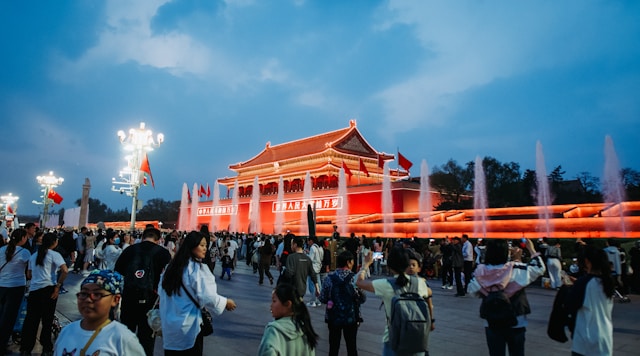
The #MeToo campaign, now a global movement, has reverberated around China.
In May 2020, China promulgated its first Civil Code, Article 1010 of which explicitly requires employers to prevent sexual harassment in the workplace. That may further bolster the #Metoo movement in China.
Before the entry into force of the Civil Code, let's take a look at some labor dispute cases to know the situation of workplace sexual harassment in China.
1. Cases of sexual harassment in the workplace
In an article published in January 2020, Judges Li Xi (李曦) and Yu Ning (于宁) of Xicheng Primary People's Court of Beijing Municipality analyzed the reported judgments on workplace sexual harassment rendered by Chinese courts from 2010 to 2019. According to their study, there were not many cases of sexual harassment among China’s labor dispute cases, and the handling of these cases by the courts was still inadequate.
The article was entitled "Study on Employers' Response to Sexual Harassment in the Workplace" (用人单位应对职场性骚扰问题探究), published in the “Journal of China Women's University” (中华女子学院学报) (No.1, 2020).
As the study shows, as of June 2019, a total of 199 cases involving "sexual harassment in the workplace" could be found on “China Judgments Online” (http://wenshu.court.gov.cn/) by searching labor dispute cases with the keyword “sexual harassment”.
The number of such cases has been increasing year by year, with only one in 2010, five in 2013, 21 in 2014, and 40 in 2018.
|
Year |
2010 |
2011 |
2012 |
2013 |
2014 |
2015 |
2016 |
2017 |
2018 |
|
Number |
1 |
0 |
2 |
5 |
21 |
23 |
46 |
37 |
44 |
Of the 117 first-instance cases mentioned above, only 39 cases(33.33%) involved substantive issues related to sexual harassment in the workplace; 56 cases(47.86%) did not involve sexual harassment in the workplace, but the company's policies or labor contracts contain provisions on anti-sexual harassment, and sexual harassment was not the issue of 22 cases (18.8%) but addressed in the parties' statements. It indicated that there were not many cases of labor disputes arising from sexual harassment in the workplace.
Among these cases, labor disputes arising from workplace sexual harassment mainly included the following two types: (1) disputes arising from the employer's dismissal of the harasser (such cases were the majority); (2) disputes arising from the victim's resignation.
As could be seen from these cases, employers would voluntarily dismiss employees who committed sexual harassment. Also, they would make such conduct one of the reasons for them to terminate the labor relations in the employee handbook. However, the success rate of employers in firing employees for sexual harassment was only about 30%.
The low success rate was mainly due to (1) the lack of conclusive evidence, i.e., the employer had insufficient evidence to prove the actual occurrence of sexual harassment; (2) the ambiguous attitude of the victim, i.e., the victim did not vehemently resist the harasser on the spot, resulting in the court's view that the employee's conduct did not constitute sexual harassment; (3) the view some courts held that sexual harassment was not a serious violation of labor discipline and therefore shall not be grounds for termination of labor relations.
Clearly, there is still a long way to go for Chinese courts to handle cases of workplace sexual harassment.
2. China's laws on sexual harassment in the workplace
In the Law on the Protection of Rights and Interests of Women (妇女权保障法) amended in 2005, Articles 40 and 58 stipulate that sexual harassment against women is prohibited; the female victims shall have the right to file complaints with the work units, apply to a public security organ for an administrative sanction against the harasser according to law, and bring a civil suit in a people's court according to law. This is the first time that the term "sexual harassment" has appeared in China's legislation. After that, the law has retained this provision in the 2018 amendment.
In 2012, the Chinese government promulgated the Special Provisions on Labor Protection for Female Employees (女职工劳动保护特别规定), and Article 11 stipulated that "Employers shall prevent and stop sexual harassment towards female employees at work premises." It is the first time that a description of sexual harassment in the workplace has appeared in China’s legislation. However, the Provisions is only an administrative regulation in nature, which is less effective than law in China’s legal system.
In December 2018, the Supreme People's Court (SPC) issued the Notice on Adding Causes of Action for Civil Cases (关于增加民事案件案由的通知), listing "sexual harassment damage liability dispute" as a new cause of action. This move has made it easier for the parties to sue for sexual harassment and more effective in holding harassers accountable for tort.
In May 2020, Article 1010 of the Civil Code stipulates that “where a person conducts sexual harassment of another person in the forms of verbal remarks, written language, images, physical behaviors or otherwise against the will of another person, the victim has the right to request the person to bear civil liability according to the law. Agencies, enterprises and schools shall adopt reasonable measures on prevention, acceptance of complaints, investigation, and handling to prevent and stop sexual harassment by making use of official powers and affiliations.” It is the first time that China has made it clear in the law that harassers will be held liable for tort, and also the first time that China has made employers responsible for the supervision of sexual harassment in the law.
The Civil Code will come into effect on 1 Jan. 2021. Will the victims of sexual harassment in the workplace plunk up more courage to take legal action after that? How will the court hear cases of workplace sexual harassment? We will continue to observe.
Contributors: CJO Staff Contributors Team









